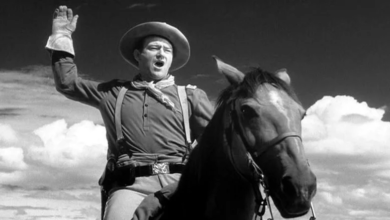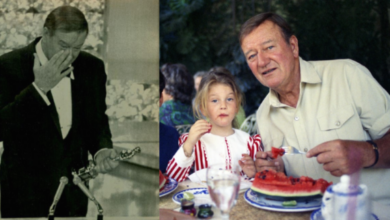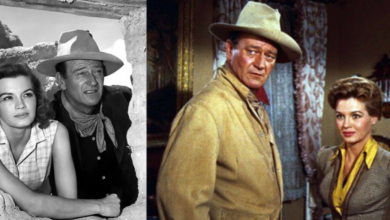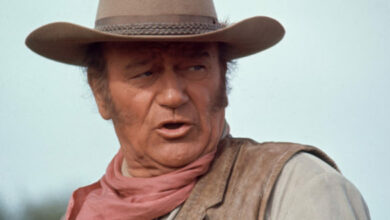The Green Berets: how the war was spun
Patriot John Wayne made a film about the Vietnam war and gave the Pentagon carte blanche to rewrite the plot. The result was a propaganda flick with dodgy Vietnamese accents
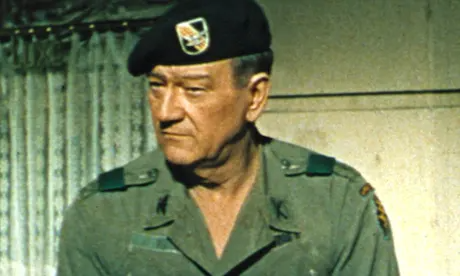
The Green Berets (1968)
Directors: John Wayne and Ray Kellogg
Entertainment grade: E+
History grade: Fail
From relatively modest beginnings in the 1950s, the war in Vietnam boomed into an epoch-defining conflict for the US in the 1960s and 1970s.
Production
During the early 1960s, criticism began to grow of US involvement in Vietnam – to the consternation of big-screen cowboy and dyed-in-the-wool patriot John Wayne. He believed in the righteousness of the American cause and wanted to make a film about it. His source material (largely discarded for the final screenplay) was a gung-ho novel by Robin Moore, The Green Berets, based on Moore’s experiences with Special Forces in Vietnam in 1963. Wayne wrote to President Lyndon B Johnson to secure government approval. “If he made the picture he would be saying the things we want said,” presidential adviser Jack Valenti assured Johnson. The Pentagon allowed Wayne lavish use of props and military bases for filming; it also retained script approval, and insisted on extensive and detailed changes to plot and dialogue.
Politics
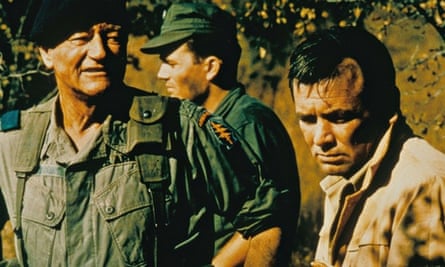
The film begins with a lengthy prologue showing what good ol’ boys the Special Forces are. But there is a liberal journalist – those guys are the worst – called George Beckworth (David Janssen). He has gotten the silly idea in his commie-loving head that this war might be a bit nasty. Fortunately, Special Forces set him right at the press conference. “What’s going on here is communist domination of the world!” claims Sergeant Muldoon (Aldo Ray). John Wayne, playing the fictional Colonel Mike Kirby, looks on approvingly.
International relations
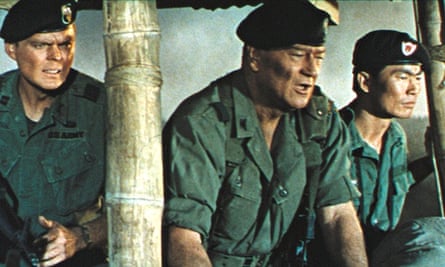
Off they all go to Vietnam, with Beckworth in tow. “This trip is going to make LSD feel like aspirin,” one of the soldiers tells him, making an unsubtle presumption about the recreational habits of pinko liberal hippy types. The army post at Fort Benning, Georgia, stood in for Da Nang in the film, not entirely convincingly. They meet local south Vietnamese Captain Nim (George Takei). “My home is Hanoi,” says Nim. “I go home too some day. You see. First kill all stinking Cong. Then go home.” All the Vietnamese characters in the film talk like this. “This’d be a great country if it weren’t for the war,” says Kirby with a sigh, inadvertently hitting on a truth.
Freedom and democracy
The Americans spend all their time in Vietnam doing nice things, like offering medical assistance to needy peasants and hugging adorable children. Meanwhile, the Vietcong are a massive, faceless force of evil, murdering children and raping women. Beckworth suddenly realises that America is totally in the right. Take that, liberals! In fact, a year after this film was released, a New Yorker investigation by Daniel Lang would reveal that such atrocities as this film attributes to the north Vietnamese were being committed by US troops. His report formed the basis for Brian DePalma’s considerably more accurate 1989 film Casualties of War.
Friendship
No suggestion of that sort of thing here, of course. Instead, The Green Berets sets up a supposed-to-be-charming relationship between goofy Sergeant Petersen (Jim Hutton) and an orphaned Vietnamese boy called Hamchunk (Craig Jue). Viewed in the 21st century, this doesn’t so much warm the heart as disquiet the stomach. Maybe the scene in which Petersen invites the preteen boy to share his bed looked cute in 1968. These days, you’d call the police.
War

The film’s big war set piece is inspired by the battle of Nam Dong in 1964, in which Viet Cong fighters took on US Special Forces. It makes no particular gesture towards the reality of this incident. The sequence is long and tedious, and there’s another 40 minutes of the film to go after it: the runtime of this beastly thing is almost two and a half hours, though it feels much longer. The last act spins off into a wacky subplot about the US kidnap of a Viet Cong general. Special Forces put him in an orange jumpsuit and whisk him away to an off-the-grid detention facility. Like so many bits of this film, it may leave modern audiences with an unpleasant sense of déjà vu.
Verdict
On The Green Berets’ release in 1968, the New York Times said it was “unspeakable … stupid … rotten … false in every detail … It is vile and insane. On top of that, it is dull.” Getting on for half a century later, it’s still hard to argue with that verdict. At least the Soviets made good propaganda movies.

